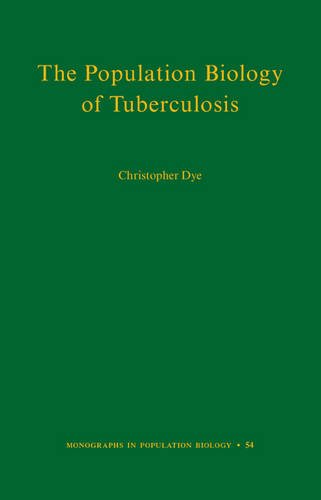The Population Biology of Tuberculosis 2015
دانلود کتاب پزشکی زیست شناسی جمعیت سل
| نویسنده |
Christopher Dye |
|---|
| تعداد صفحهها |
296 |
|---|---|
| نوع فایل |
|
| حجم |
1 Mb |
| سال انتشار |
2015 |
89,000 تومان
با وجود چندین دهه پیشرفت در ایمن سازی و درمان دارویی، سل همچنان یکی از علل اصلی مرگ و میر انسان است و هیچ کشوری موفق به حذف این بیماری نشده است. با تجسم مجدد سل از منظر زیست شناسی جمعیت، این کتاب به چرایی ادامه این بیماری و آنچه برای مبارزه با آن باید انجام شود، می پردازد. کریستوفر دی با توجه به سل و میزبان های انسانی آن به عنوان جمعیت های پویا و متقابل، با تکیه بر جمعیت شناسی، بوم شناسی، اپیدمیولوژی، تکامل و ژنتیک جمعیت به دنبال پاسخ های جدیدی برای سؤالات کلیدی است. Dye از مدل های ساده ریاضی برای بررسی چگونگی کاهش موارد و مرگ و میر و اینکه چگونه مداخلات می تواند منجر به از بین بردن سل شود، استفاده می کند.
تجزیه و تحلیل Dye شکاف قابل توجهی را بین تأثیر واقعی و بالقوه مداخلات فعلی، بهویژه درمان دارویی، نشان میدهد و نشان میدهد که تمرکز بیشتر بر تشخیص و درمان اولیه موارد سل فعال یا اولیه است. او استدلال می کند که پاسخ به نرخ های ناامیدکننده آهسته رگرسیون بیماری، کنار گذاشتن اصول قدیمی شیمی درمانی نیست، بلکه اجرای قوی تر آنها است. صباغ با جمع بندی بینش های اپیدمیولوژیک برگرفته از زیست شناسی جمعیت، بر نیاز به نگاه جامع تر به عوامل مؤثر بر بیماری، از جمله ویژگی های پاتوژن، افراد و جمعیت ها، سیستم های مراقبت های بهداشتی، و محیط های فیزیکی و اجتماعی تأکید می کند.
با گسترش افق تحقیقات سل، زیست شناسی جمعیتی سل نشان می دهد که برای پیشگیری، کنترل و شکست این تهدید جهانی در قرن بیست و یکم چه باید کرد.
Despite decades of developments in immunization and drug therapy, tuberculosis remains among the leading causes of human mortality, and no country has successfully eradicated the disease. Reenvisioning tuberculosis from the perspective of population biology, this book examines why the disease is so persistent and what must be done to fight it. Treating tuberculosis and its human hosts as dynamic, interacting populations, Christopher Dye seeks new answers to key questions by drawing on demography, ecology, epidemiology, evolution, and population genetics. Dye uses simple mathematical models to investigate how cases and deaths could be reduced, and how interventions could lead to TB elimination.
Dye's analysis reveals a striking gap between the actual and potential impact of current interventions, especially drug treatment, and he suggests placing more emphasis on early case detection and the treatment of active or incipient tuberculosis. He argues that the response to disappointingly slow rates of disease decline is not to abandon long-established principles of chemotherapy, but to implement them with greater vigor. Summarizing epidemiological insights from population biology, Dye stresses the need to take a more inclusive view of the factors that affect disease, including characteristics of the pathogen, individuals and populations, health care systems, and physical and social environments.
In broadening the horizons of TB research, The Population Biology of Tuberculosis demonstrates what must be done to prevent, control, and defeat this global threat in the twenty-first century.




